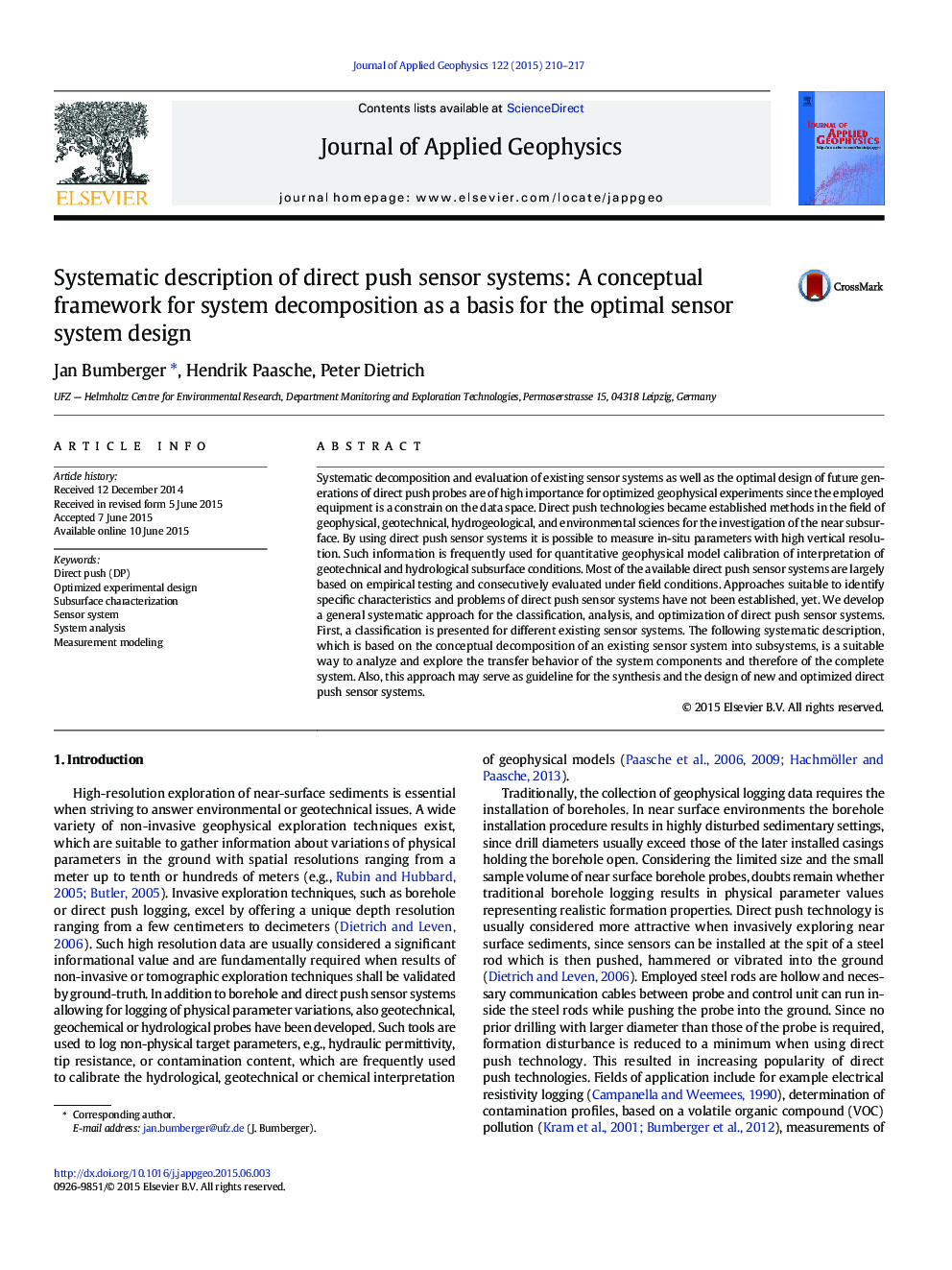| Article ID | Journal | Published Year | Pages | File Type |
|---|---|---|---|---|
| 6447122 | Journal of Applied Geophysics | 2015 | 8 Pages |
Abstract
Systematic decomposition and evaluation of existing sensor systems as well as the optimal design of future generations of direct push probes are of high importance for optimized geophysical experiments since the employed equipment is a constrain on the data space. Direct push technologies became established methods in the field of geophysical, geotechnical, hydrogeological, and environmental sciences for the investigation of the near subsurface. By using direct push sensor systems it is possible to measure in-situ parameters with high vertical resolution. Such information is frequently used for quantitative geophysical model calibration of interpretation of geotechnical and hydrological subsurface conditions. Most of the available direct push sensor systems are largely based on empirical testing and consecutively evaluated under field conditions. Approaches suitable to identify specific characteristics and problems of direct push sensor systems have not been established, yet. We develop a general systematic approach for the classification, analysis, and optimization of direct push sensor systems. First, a classification is presented for different existing sensor systems. The following systematic description, which is based on the conceptual decomposition of an existing sensor system into subsystems, is a suitable way to analyze and explore the transfer behavior of the system components and therefore of the complete system. Also, this approach may serve as guideline for the synthesis and the design of new and optimized direct push sensor systems.
Related Topics
Physical Sciences and Engineering
Earth and Planetary Sciences
Geophysics
Authors
Jan Bumberger, Hendrik Paasche, Peter Dietrich,
